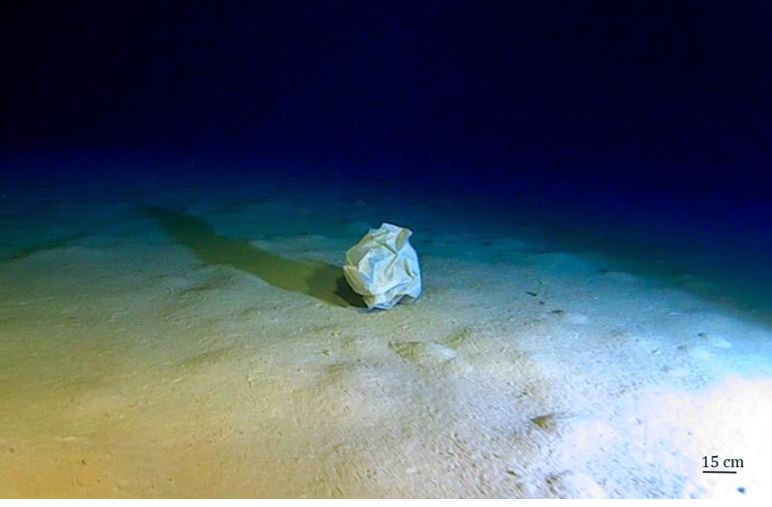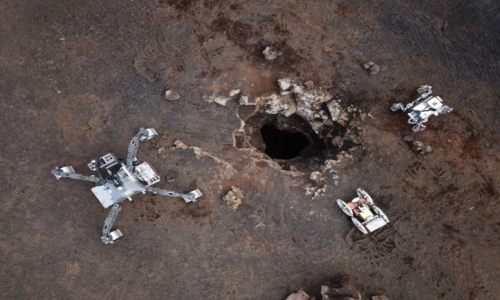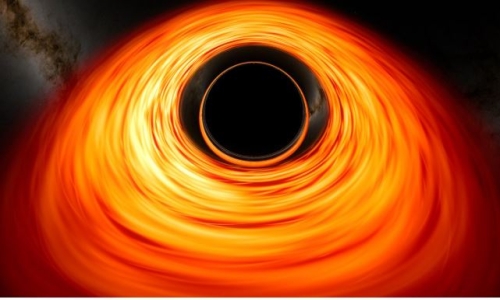


 11:18:51
11:18:51  2025-03-27
2025-03-27  970
970

The floor of the Calypso Deep − a 5,112-meter-deep trench in the Ionian Sea − holds one of the highest concentrations of marine debris found anywhere in the deep ocean.
Human waste has now reached the deepest point in the Mediterranean Sea: the Calypso Deep, located 5,112 meters (16,772 feet) below the surface in the Ionian Sea. Researchers identified a total of 167 objects on the seafloor, mostly plastic, glass, metal, and paper. Of these, 148 were confirmed as marine debris, while 19 are believed to be of possible human origin. This represents one of the highest concentrations of marine litter ever recorded at such extreme depths.
The findings are detailed in a study published in the journal Marine Pollution Bulletin. The lead authors include Miquel Canals from the University of Barcelona’s Faculty of Earth Sciences; Georg Hanke from the European Commission’s Joint Research Centre (JRC); François Galgani from the French Research Institute for Exploitation of the Sea (IFREMER); and Victor Vescovo of the American company Caladan Oceanic.
To reach the bottom of the trench, a key challenge in the study, the team used a state-of-the-art manned submersible called the Limiting Factor. This deep-submergence vehicle (DSV) captured images showing that marine litter is not limited to coastlines, surface waters, or shallow seabeds, but also accumulates in the deepest and most remote parts of the Mediterranean. This sea is especially vulnerable to human impact.
The debris identified by the international team in the Calypso Deep warns of the need to implement global policy actions to reduce ocean waste, as well as to encourage changes in citizens’ consumption habits and waste reduction in order to protect seas and oceans around the world.
Marine debris in the deepest Mediterranean Sea
The Calypso Deep is a depression located 60 kilometers west of the Peloponnese coast in Greece, within the so-called Hellenic Trench, with several similar but shallower depressions. Located in an area of high seismicity due to active faults, it is surrounded by fairly steep, stepped relief and has slopes of thousands of meters and a virtually flat bottom. The inner part of the trench, more than 5,000 meters deep, is kidney-shaped and measures approximately 20 km by 5 km.
But how did the rubbish get so deep? The debris at the bottom of the Calypso Deep “comes from various sources, both terrestrial and marine. It could have arrived by various routes, including both long-distance transport by ocean currents and direct dumping,” explains Miquel Canals, professor at the Department of Earth and Ocean Dynamics and director of the UB Chair on Sustainable Blue Economy.
“Some light waste, such as plastics, comes from the coast, from where it escapes to the Calypso Deep, just 60 kilometers away. Some plastics, such as bags, drift just above the bottom until they are partially or completely buried, or disintegrate into smaller fragments,” he says.
“We have also found evidence of the boats’ dumping of bags full of rubbish, as revealed by the pile-up of different types of waste followed by an almost rectilinear furrow. Unfortunately, as far as the Mediterranean is concerned, it would not be wrong to say that “not a single inch of it is clean,” warns the expert. The Calypso Trench traps and accumulates the anthropogenic materials that reach it at the bottom: “It is a closed depression, which favors the accumulation of debris inside it. The weak currents in the trench — about two centimeters per second and, exceptionally, 18 — also facilitate the deposition of light debris at the bottom.”
The currents carry floating debris mainly from the southern Ionian Sea and from marine areas further south. Surface eddies also tend to form, concentrating the debris inland. “When these eddies are located over the Calypso Trench, some debris tends to fall slowly to the bottom, aided by degradation mechanisms and ballasting processes that increase its density. Surface currents can also transport debris from the Adriatic Sea to the north, through the Strait of Otranto, and from the waters off north-western Greece.”
The Limiting Factor: cutting-edge technology for deep-sea exploration
Accessing the deepest sea basins is a huge challenge that requires the use of cutting-edge technology. In this case, the innovation is the Limiting Factor submarine, built by Triton Submarines. This vehicle, which is deployed from specially prepared mother ships, is capable of carrying two passengers to the deepest ocean trenches. During the inspection of the seabed, this unique technological device moves slowly — about 1.8 kilometers per hour — to obtain good-quality images.
In the Calypso Deep, the Limiting Factor was able to cover a distance equivalent to 650 meters in a straight line, during a 43-minute stay near the bottom. “On each dive, more time is usually spent descending and ascending the vehicle back to the surface than inspecting the bottom. Each complete dive usually takes a few hours,” Canals notes.
This technology has made it possible to calculate the density of marine litter at the bottom of the trench, although no significant impacts on marine life have been detected, as it is particularly impoverished in this chasm of the Ionian Sea. The images only revealed the presence of the species Coryphaenoides mediterraneus, a fish of the macrouridae family, and the decapod Acanthephyra eximia.
“However, in places with more biodiversity, there are different types of interaction between the debris deposited on the bottom and the organisms, such as ghost fishing, burial, hooking or ingestion, but also the use of debris as a substrate where animals can grow, hide or lay their eggs,” Canals notes.
The Mediterranean is one of the most polluted seas by marine debris
The first evidence of debris on the world’s seabed dates back to 1975, in the Skagerrak Strait in the North Atlantic. Canyons and seamounts are the major accumulation points for debris, which can be buried, crumbled, or moved by gravity, ocean currents, and other oceanographic factors.
Today, the Mediterranean is a marine region particularly affected by this environmental problem. In 2021, a study already identified the Strait of Messina as the area with the highest known density of marine litter in the world (Miquel Canals et al., Environmental Research Letters). This is a real hotspot where large quantities of waste accumulate.
“The Mediterranean is an enclosed sea, surrounded by humanity, with intense maritime traffic and widespread fishing activity. The evidence provided by our research should shake up global efforts, and in particular in the Mediterranean, to mitigate waste dumping, especially plastics, in the natural environment and ultimately in the sea, in line with the UN Global Plastics Treaty against plastic pollution, which is still pending approval. Even the papal encyclical Laudato si’ of May 2015 goes in this direction, as well as some declarations of the G7 world summits, although we are still far from achieving a great social echo in terms of seabed litter”, Canals notes.
Unlike other popular places, such as beaches or the coastline, “the ocean floor is still largely unknown to society as a whole, which makes it difficult to raise social and political awareness about the conservation of these spaces,” the expert continues. “It is necessary to make a joint effort between scientists, communicators, journalists, the media, influencers, and other people with social impact. The problem is there, and it has an enormous scope, even if it is not directly visible. We should not forget about it,” concludes Miquel Canals.
Reality Of Islam |
|

A research

Researchers

If you'
 9:3:43
9:3:43
 2018-11-05
2018-11-05
10 benefits of Marriage in Islam
 7:5:22
7:5:22
 2019-04-08
2019-04-08
benefits of reciting surat yunus, hud &
 9:45:7
9:45:7
 2018-12-24
2018-12-24
advantages & disadvantages of divorce
 11:35:12
11:35:12
 2018-06-10
2018-06-10
 6:0:51
6:0:51
 2018-10-16
2018-10-16
 2:13:43
2:13:43
 2022-05-27
2022-05-27
 11:11:59
11:11:59
 2023-02-01
2023-02-01
the happy life of mankind requirement
 6:36:36
6:36:36
 2022-01-25
2022-01-25
 8:21:9
8:21:9
 2018-06-21
2018-06-21
 8:30:23
8:30:23
 2022-03-03
2022-03-03
 6:14:3
6:14:3
 2023-01-18
2023-01-18
 10:35:40
10:35:40
 2022-05-26
2022-05-26
 5:41:46
5:41:46
 2023-03-18
2023-03-18
| LATEST |